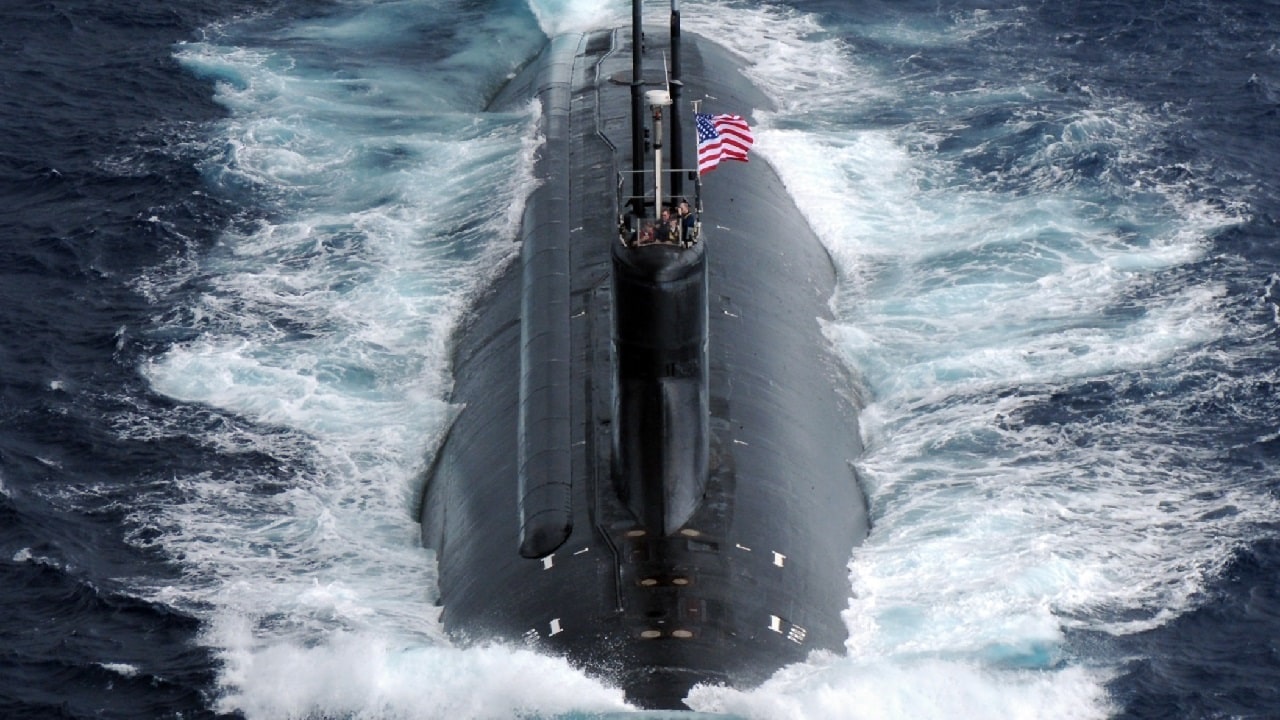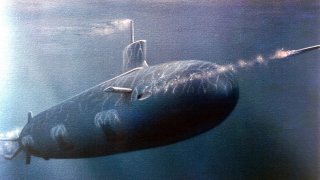Seawolf-Class: The U.S. Navy Submarine Legend That Can Do It All
Initially, 29 Seawolf-class SSNs were expected to be produced. However, production time on each submarine was lengthy and by the time the first USS Seawolf was commissioned, the geopolitical landscape had shifted
Meet the Seawolf-Class: As the U.S. Navy’s sole seabed warfare submarine, the USS Jimmy Carter plays a significant role in the service. The ship is uniquely fitted for covert spy missions deep within the ocean, enabling it to perform mission sets that other vessels cannot reach.
Underwater infrastructure and cables have grown considerably over the last decade or so, culminating in the increase in seabed attacks. Last fall, a series of bombings and gas leaks damaged the Nord Stream 1 and 2 natural gas pipelines in the Baltic Sea. This notable incident indicated how seabed warfare and its associated consequences could play a role in future conflicts.
In order to combat the growing prevalence of seabed warfare, the U.S. is turning to its Virginia-class nuclear fast attack submarines. The latest iteration of this series of SSNs, the Block V class, will feature attributes that will allow it to defend underwater infrastructure.
However, the Navy actually already possesses a submarine built for these types of mission sets – the USS Jimmy Carter. Commissioned in the early 2000s, the Jimmy Carter is the third and last SSN in its Seawolf-class. Named to honor the 39th president of the U.S., this submarine is often described as a subclass considering her unique design to her sister vessels, like seabed warfare capabilities.
An Overview of the Seawolf-class
During the Cold War, the U.S. military realized the need for an advanced SSN capable of countering the Soviet Union’s advanced Soviet ballistic missile submarines. The USSR’s Typhoon class and Akula class attack submarines were quite formidable.
In order to combat this underwater threat, the Seawolf class was conceptualized. The new SSNs were designed to replace the older Los Angeles-class submarines, which simply were less advanced than the Soviet counterparts. Hoping to regain its technological edge over the USSR, the Seawolf-class was fitted with a litany of advancements.
Initially, 29 Seawolf-class SSNs were expected to be produced. However, production time on each submarine was lengthy and by the time the first USS Seawolf was commissioned, the geopolitical landscape had shifted.
Following the collapse of the USSR, the once urgent need to possess scores of these formidable submarines faded. Ultimately, only three Seawolf-class submarines were ever launched. The Electric Boat Division of General Dynamics and Newport News Shipbuilding were responsible for constructing these costly SSNs. Each ship cost over $3 billion to build.
What Can the Seawolf-class SSNs Accomplish?
One of the most impressive capabilities of the Seawolf class is its ability to dive as deep as 490 meters beneath sea level. An S6W pressurized water reactor also enables the submarines to travel at a maximum speed of 40 miles per hour.
The submarines were powered by two turbines, a single shaft, a pump jet propulsor, and a GE PWR S6W reactor. The Seawolf was also reportedly designed for shallow operations, an ability shared with Block III Virginia-class boats.
Weapons-Wise, the Seawolf SSNs are Powerhouses
In terms of armaments, the Seawolf class submarines could pack a punch. These vessels are armed with both the land-attack and anti-ship version of the Tomahawk missile which has a range of 2,500km.
Additional stats have been documented by Naval Technology. “Tomahawk can be fitted with a nuclear warhead, although it is not normally carried. Block III improvements include an improved propulsion system and Navstar global positioning system (GPS) guidance capability. The anti-ship Tomahawk missile is equipped with inertial guidance and an active radar and anti-radiation homing head. The range is up to 450km.
“The first underwater launch of the new Raytheon Tactical Tomahawk block IV missile took place in November 2002. Block IV includes a two-way satellite link that allows reprogramming of the missile in flight and transmission of battle damage indication (BDI) imagery. The missile entered service with USN surface ships in September 2004.” Boeing’s Harpoon anti-ship missile is also carried by the Seawolf-class.

What Makes the USS Jimmy Carter Stand Out?
Unlike its sister submarines, the USS Jimmy Carter is longer and allows for special operations. The deployment of Navy SEALs and seabed warfare capabilities are just two of the ways this extra length is utilized.
According to Popular Mechanics, “Because of the USS Jimmy Carter’s advanced stealth and unique troop-deployment bay, it is considered the most dangerous submarine currently carrying out missions.”
Despite the Seawolf class’s advanced capabilities, only three of these vessels were ever constructed. Now that the Navy is experiencing a submarine deficit, analysts have noted that additional Seawolf SSNs would have prevented this issue.
The Navy has been working hard to build the latest Virginia-class Block V variants, which will possess seabed warfare capabilities like the USS Jimmy Carter in addition to a much greater Tomahawk missile capacity.
Maya Carlin is an analyst with the Center for Security Policy and a former Anna Sobol Levy Fellow at IDC Herzliya in Israel. She has by-lines in many publications, including The National Interest, Jerusalem Post, and Times of Israel. You can follow her on Twitter: @MayaCarlin.

